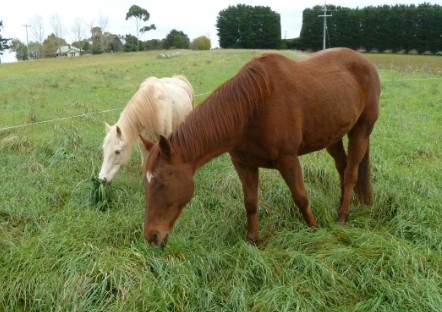PER KG GLYCINE COOPER COATED (SPR LEGUME) 171210
Product ID: 171210
$23.25
Description
Grown in association with tussock grasses in permanent, semi-intensively managed pastures.
As it holds its leaf better in cool conditions, the variety Cooper can be grown further inland, performing well on more fertile soils in higher rainfall, sub-coastal areas of southern QLD.
It has larger, coarser leaves and longer internodes, with a dull green colour.
Tolerates drought and waterlogging better than Tinaroo.
It can be used to grow over and smother shrubby weeds in a pasture, and also as a high protein stand over feed in frost-free areas.
The plant is vigorous trailing and twining, strongly tap rooted perennial legume climbing to 10 m on associated species.
The Stems are woody main stem can reach a diameter of 25 mm at the base in older plants, while the much-branched herbaceous stems are mostly only 2-3 mm in diameter and covered with grey to reddish-brown hairs.
Cultivars vary in their ability to root down along trailing stems.
The leaves comprise three leaflets mostly 5 - 10 cm long and 4.0 - 6.5 cm wide, covered in fine grey to reddish-brown hairs.
Flowers individual flowers about 5 mm long, whitish with pink-violet streaks, borne in large numbers along a central stem usually 10 - 15 cm long.
Seeds rectangular with rounded corners, 3mm long and 2mm wide, light to dark brown, about 150,000-160,000/kg.
Features:
Productive
Moderately drought tolerant
Good seed production
Palatable
Persistent under suitable management
Limitations:
Restricted to near neutral, fertile soils
Slow nodulation and establishment
Frost-tender
Susceptible to amnemus weevil attack
Glycine is mostly grown in areas with an annual rainfall above 1000 mm, and usually below 2000 mm.
Although it will grow outside these zones, there are usually better adapted legumes that can be used.
It grows best on deep, fertile, freely drained, near neutral clays and clay loams, usually of alluvial or volcanic origin i.e. largely well-structured red and black soils.

171210@171210@webp@450x450.jpg)



@99947471@300x300.jpg)

PERKG@181316@300x300.jpg)
171217@171217@300x300.jpg)
PERKG@191499@300x300.jpg)

PERKG22101113@171223@300x300.jpg)
181253@181253@300x300.jpg)